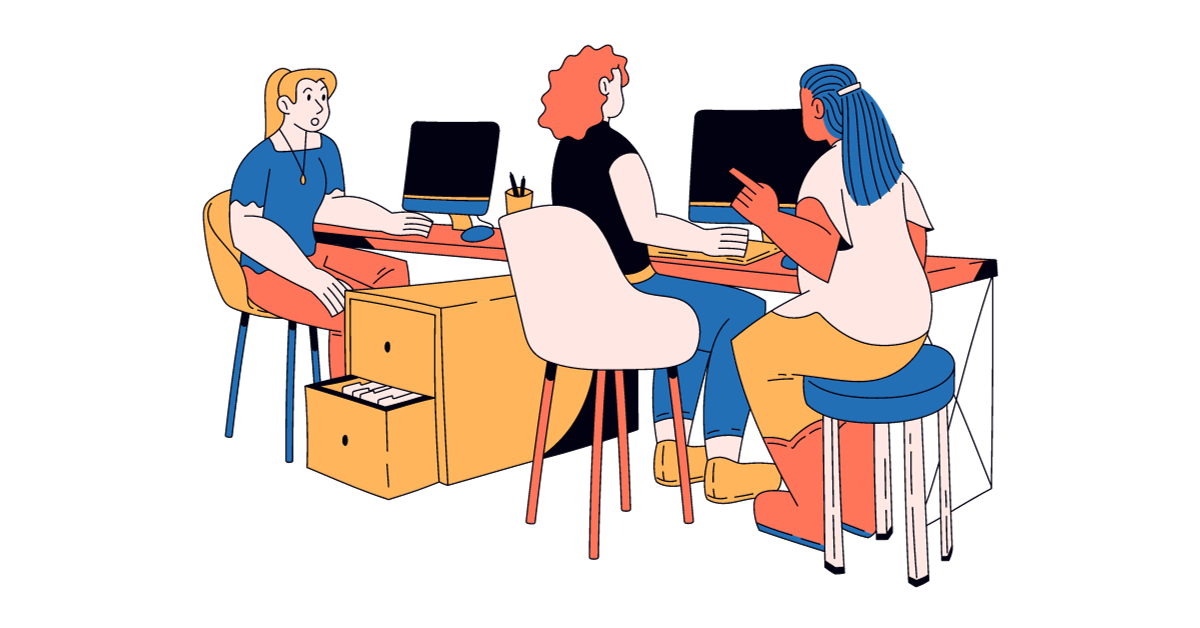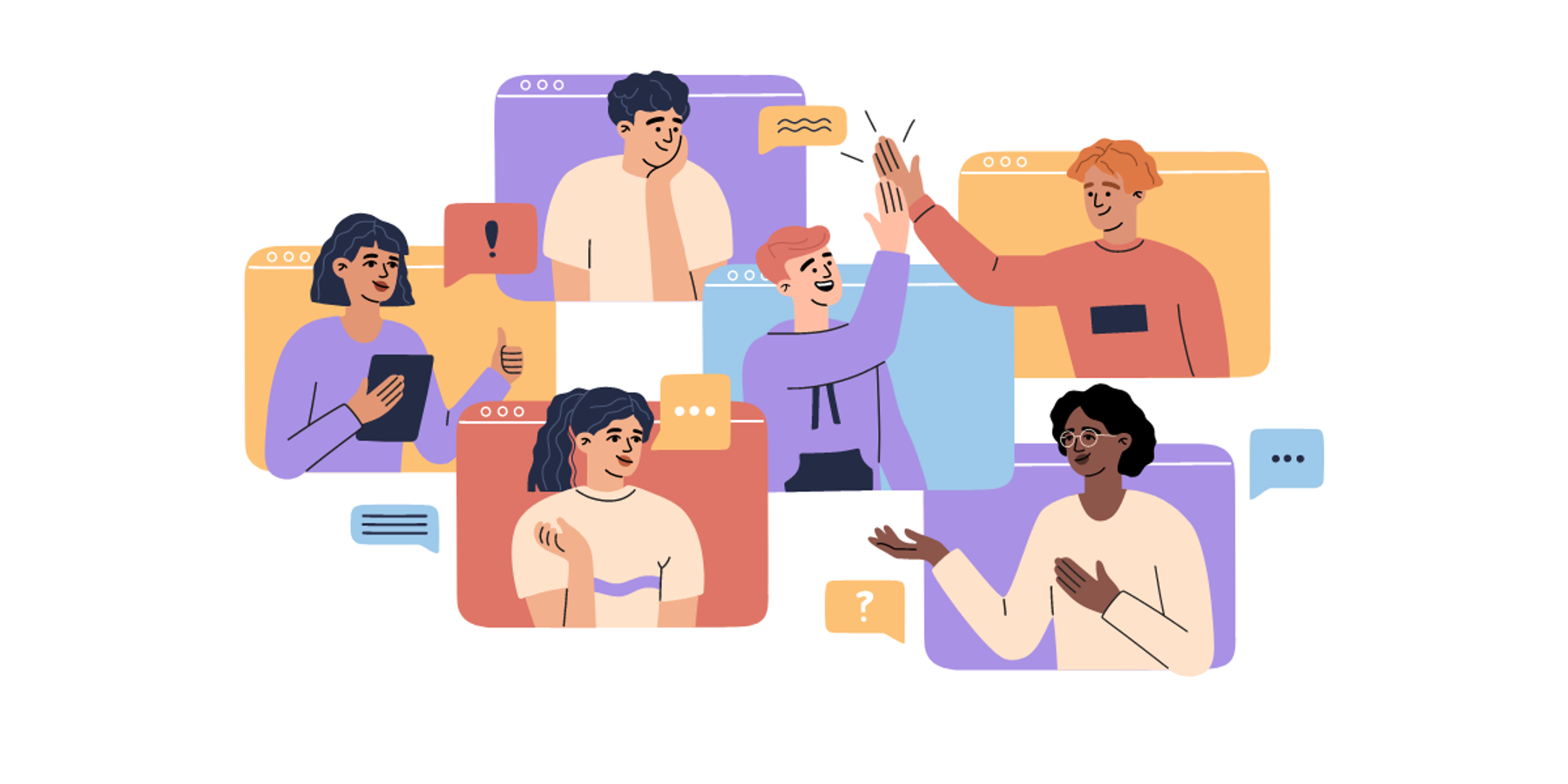If you’re someone who hasn’t experienced microaggressions at work, you might be surprised at just how many microaggression examples are out there.
Although microaggressions are often dismissed as “just a joke” or even “compliments” by those in power, for those who experience the constant, demoralizing drumbeat of microaggressions in the workplace, they are anything but complimentary or funny. Microaggressions are subtle expressions of discrimination that occur everywhere: at work, in life, and at school. They are real, and they have measured negative effects on people’s lives. A lifetime of experiencing microaggressions can lead to reduced mental and physical health as well as increased emotional problems and challenges.
Let’s take a look at specific microaggression examples, why they’re a form of prejudice, and what we can do to reduce them in the workplace.
A microaggression definition
The concept of microaggressions was first developed in 1969 by psychiatrist and Harvard University Emeritus Professor Chester M. Pierce when discussing the experience of racism in the everyday lives of Black Americans. He observed that most actions of microaggression are “subtle, stunning, often automatic, and non-verbal,” adding that these blows are delivered incessantly over a person’s lifetime. Later, the psychologist Derald Wing Sue offered a similar microaggression definition:
“The everyday verbal, nonverbal, and environmental slights, snubs, or insults, whether intentional or unintentional, that communicate hostile, derogatory, or negative messages to target persons based solely upon their marginalized group membership.”
Despite both examples above specifically highlighting “non-verbal” microaggressions, it’s important to note that microaggressions can absolutely be verbal. The difference between verbal macroaggressions versus microaggressions often simply comes down to which expressions of racism a particular society still condones; for example, some people today may understand that calling Black women “welfare queens” is a serious form of discrimination (or macroaggression) but still think it’s acceptable to ask to touch their Black colleague’s hair (a microaggression). Given they’re commonplace and often harder than macroaggressions to call out, the cumulative impact of microaggressions is anything but small.
Prevalence of microaggressions
How common are microaggressions? Gallup found that:
- 32% of Black adults say people have acted as if they were better than them
- 25% say people have acted as if they weren’t smart
Another study found that Black and Latino Americans experience significantly more microaggressions than White people across several different types of microaggressions, scoring higher in all of the following categories:
- Regularly experiencing disrespect
- Regularly receiving poor service
- Regularly being treated as someone to be afraid of
- Regularly being treated as not smart
- Regularly being treated as threatening
Meanwhile, at least 32% of Asian Americans reported experiencing microaggressions in interpersonal interactions in a 2019 study.
Microaggressions in the workplace
We bring our unconscious biases to the job with us. As such, there are plenty of microaggression examples in the workplace. Let’s read some. Take the time to consider why these comments are inappropriate. Also consider what it may be like to hear this same comment for the second, fifth, and 50th time in your life.
1. “She [does something] like a man.”
Whether it's “makes decisions” or “is bossy,” this kind of statement relies on sweeping, gender-based generalities and stereotypes to send the message that women are inferior to men.
2. “You’re a credit to your [race/people/team].”
No single person can or should represent the entirety of a group of people. This comment suggests surprise as well, implying that if someone who holds a particular identity performs well, it is unique or remarkable.
3. “You’re so well-spoken.”
Whether intentionally or subconsciously, this comment implies that you expected the person to speak unprofessionally, to speak with a strong accent, or to sound as if they had less education. It’s usually leveled at people of color by White people who’ve made a racist or ethnically discriminatory assumption about their immigrant or socioeconomic status or their level of education.
4. “You’re so brave.”
This commentary is patronizing, meaning it appears kind but is actually condescending. People with disabilities do not want your pity. Nobody is “brave” for existing or participating in completely normal and healthy activities such as being in public, wearing a bathing suit at the beach, or going through daily life with a positive attitude. Nobody wants to be seen as an object for your inspiration.
5. “You’re so exotic.”
This is a common objectification aimed at people of color. It can carry sexualized undertones, which is additionally inappropriate at work. Food-related descriptors are sometimes used in similar comments, like calling someone “spicy,” “chocolate,” or “caramel.” Othering someone for their cultural dress or non-European features categorizes that person as being outside the norm and suggests they exist for your visual consumption.
6. “Can I touch your [hair/turban/hijab/wheelchair/skin]?"
This comment is a kind of tokenism. By implying that a person’s physical feature, style of dress, or mobility aid is out of the ordinary – to the point that you’ve never seen it before and would like to touch it to experience it for yourself – you are “othering” them. You are also pointing out that that person is the only one in the office sporting that feature. It can cause the person to feel isolated and alone. Nothing about a person’s physical features, dress, or equipment requires that you touch it. In fact, in an office setting there are very few situations, beyond an emergency, in which you should be touching your coworkers at all. Even in countries like Spain, where a cheek kiss can be a typical greeting, business etiquette dictates that it’s best to avoid touch in professional settings. Consider that if you have to ask permission, it isn’t a natural behavior for the office.
7. “You’re gay. Do you know Tom?”
No, not all [insert marginalized identity here] people know each other.
8. “You’re Latino. Can you do a presentation on Cinco de Mayo?”
People of Latin heritage are often grouped together as a singular block in the U.S., which erases important cultural aspects of country and regional heritage. Latin America includes Bolvians, Peruvians, Puerto Ricans, Chileans, Mexicans, and many more. Within those countries, culture can be further defined along unique racial and historical lines. Cinco de Mayo is a holiday celebrated mostly by Mexican Americans in the U.S. It is incorrect and insensitive to ask your Puerto Rican coworker to host a presentation about it.
9. “You’re [identity]. What do your people think about XYZ?”
People with a certain identity do not speak for everyone who identifies similarly. Treat people as individuals.
10. “You speak [language]. Can you translate this/do a live interpretation?”
If translation is not an explicit part of their job description, demanding this extra work requires extra compensation. Translation and live interpretation are entirely separate careers. They require education, training, certification, and pay rates appropriate for those skills. Monolingual people often imply it’s “no big deal” to translate a report, but they are wholly unqualified to determine the difficulty level of a multilingual task.
11. “I’m more [identity] than you.”
Just because a White person dated someone from a place or visited that place does not give them access to that identity. This comment is especially offensive to diaspora communities who, through no fault of their own, may not speak their heritage language or be familiar with their heritage country.
12. “Nice [shoes/hair/dress].”
It’s okay to compliment someone's appearance, but when it’s the only compliment that women get at work, it’s a microaggression. Chances are you aren’t complimenting your male staffers on their appearances at the same frequency or in the same manner. Let’s stop reinforcing values through looks. How about complimenting her work, like how she handled the last big project?
13. “Is [sexual act] real?”
Making explicit sexual comments to your LGBTQIA+ coworker is inappropriate yet common. Some 18% of LGBTQIA+ workers reported that someone at work has made sexually inappropriate comments to them because their coworker thought that their sexual orientation or gender identity made it okay. This is inappropriate workplace conversation in general and opens the company up to potential legal action.
14. “But who’s the ‘man?’ in the relationship?”
Again, this comment can be sexual in nature. It also sends the message that a binary man-woman relationship is the blueprint in society and that other dynamics are less valid. When engaging in small talk at work, avoid value judgements about someone’s social life.
Microaggressions in everyday life
Examples of microaggression in everyday life are not so different from the workplace. After all, the average person will spend about 90,000 hours or 33% of their life at work. That said, here are some microaggression examples you may see in everyday life – in the office or after hours.
15. “Where are you really from?” or “What are you?”
If you are not White in America, you have likely heard these comments all your life. Because mainstream U.S. culture is presumed to be White European in heritage, people of color are often incorrectly presumed not to be U.S.-born. Also, avoid the question What are you? This quite literally objectifies the person. Ask about heritage specifically, or skip this question altogether. Contain your curiosity until the person offers this personal information in a more appropriate setting.
16. “But you don’t look [nationality].”
This implies that someone appears unlike your idea of the stereotypical person from that country. It is offensive precisely because it “others” diverse groups and implies racial purity as a norm.
17. “Your English is so good!”
This tells the person they look too “ethnic” to be a native English speaker. Remember that both the British and U.S. governments have forced many regions of the world to speak English from birth instead of their native languages. People from the Philippines, Singapore, Nigeria, and even countries never colonized by the British are native English speakers. Also remember that English is neither an official nor native language to the U.S.
18. “I had a [your heritage] girlfriend/boyfriend once.”
Put yourself in that person’s shoes. What exactly are they supposed to say this — “uh, cool?” Not only is it irrelevant, it’s also a tool White people like to use to attempt signaling to a person of color that they “get it.” But proximity to people of color, past or present, doesn’t get you a “good White person” badge.
19. “You don’t look like a lesbian.”
So all lesbians look like… what exactly, in your opinion? Let’s stop gendering and judging people by their looks.
20. Action: Crossing the street to avoid a Black person.
Yes, Black peoples notice when they are treated differently. This non-verbal microaggression is equally as obvious as verbal ones.
21. Action: Following someone around a shop.
Thinking someone is going to steal based on their looks is prejudice.
22. “When are you going to have a baby?” or “When are you getting married?”
These questions imply that being a parent or spouse is a superior status and you are looking forward to this person reaching some imaginary and unnecessary “next step.” It can also be harmful for people who have complications in those areas. Appreciate people in their present moment. Celebrate where they are without putting pressure on them to change according to your timeline or expectations.
Microaggressions in the classroom
Microaggressions do not begin in adulthood. In fact, by adulthood, many people have already experienced a lifetime’s worth of microaggressions at school. Here are some microaggression examples from the classroom.
23. “Engineering? Maybe you should try a more suitable subject.”
This implies that only certain subjects are suitable for certain people.
24. “You’re smart for a girl.”
In other words, implying that girls aren’t usually smart.
25. “You [throw/run] like a girl.”
This comment has historically been used to imply that girls have inferior sporting abilities. It’s sexism. As the viral #LikeAGirl ad campaign proved, this concept of inferiority is socialized into us. The ad pushes us to ask ourselves: When did doing something “like a girl” become an insult? Children, especially young girls, are unaware that girls aren’t supposed to be good at sports. Let’s envision a world where giving it your all, in sports or otherwise, doesn’t fade away as we age out of childhood.
26. “Big boys don’t cry.”
Girls are naturally emotional and boys are naturally tough? No. This is gender policing.
27. “It’s what all the normal kids do.”
The concept of “normal” children is denigrating. There is no normal. All of society is made up of bell-curves and outliers – children included. This kind of commentary is especially harmful to children who are neurodiverse and may behave differently in social settings. Allow for a breadth benchmarks and behaviors to be seen as typical.
28. “Boys and girls.”
At school, everything from lines to enter the classroom to bathroom colors are gendered. This microaggression tells children that there are only two genders: boy and girl. It ruins belonging for children that don’t fit the typical gender stereotypes. It also teaches that genders should be kept separate, which is poor preparation for adult society in the U.S. Find other ways to divide your class into groups besides gender.
Responding to microaggressions
Using these microaggression examples to identify when prejudice is happening is the first step. Here’s how to respond to them.
As a witness:
- Be an ally: Offer support and condemn the behavior. Importantly, you should check in and ask the person on the receiving end of the microaggression how they’d like to be supported. Options include:
- Calling out: Immediately stopping the action or conversation in the moment the next time it happens.
- Calling in: In a 1:1 conversation after the incident, pulling the microaggressor aside.
- Communicate: Why was the microaggression offensive from your point of view?
- Keep it focused on you: As you explain what was offensive or insensitive, don’t put words in the mouth of the person who the microaggression was aimed at.
As someone who committed a microaggression:
- Don’t get defensive. Stay calm.
- View it as an opportunity to understand and grow beyond your unconscious biases.
- Acknowledge the people’s feelings and apologize for your comments.
- If appropriate, also thank them for taking the time to educate you. Thanks to them, you can do better next time now.
- Take responsibility and avoid future microaggressions.




